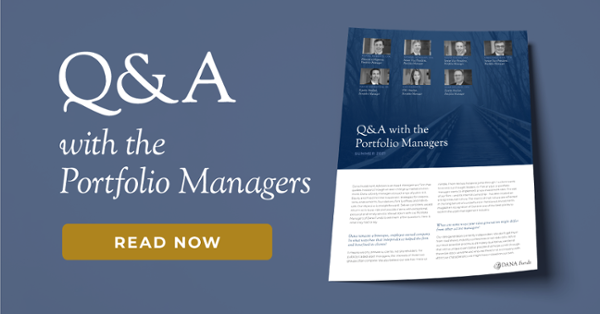Style Boxes Pose Pitfalls in Post-Pandemic Investment Landscape
Growth or value? It’s a question advisors and allocators ponder at every potential turning point in the market cycle. But as the world emerges from a pandemic-induced lockdown, the new investment environment may favor neither.
Instead, we believe heavy tilts toward either style box could punish investors in the coming quarters. Here’s the short case for why:
Scarcity of Growth Has Created a Crowding Effect Among Growth Stocks
So far this year, growth has outperformed value substantially. If the Russell 1000 Growth and Russell 1000 Value Index ended the year where they were at in mid-May, the growth index would have outperformed its value counterpart by the widest level in any year since 1999.¹
The global economic downturn has meant scarcity of growth throughout the world. As such, we believe there has been a crowding effect chasing up valuations of high-growth companies on the right side of secular trends.
However, as the market receives confirmation the economy has come out of its trough, investors will be less willing to pay extreme multiples for growth. As growth becomes less scarce, the market may begin to favor many of the cyclical companies within value indices. A pure growth strategy won’t be able to capture that rotation.
Value Benchmarks Have Their Own Problems
While cyclical companies in value indices present opportunities for investors, the post-pandemic environment will also leave more than the usual level of value traps.
As the world comes out of lockdown, permanent changes in consumer behavior will also emerge. Consumers may be reticent to stay in hotel rooms, board a cruise ship, or sit in the middle seat of an airplane, for example. An elongated return to normalcy for certain industries means earnings will not snap back quickly. Investors could be right to avoid these stocks, regardless of low valuations.
Other well-known trends that were already pushing forward before the pandemic – e-commerce disruption, software-as-a-service, video streaming – have accelerated, during the quarantine. Companies on the wrong side of these trends create value traps as well.
The Case for Core
We believe the current environment makes a good case for core equity strategies. Companies at the heart of long-term secular trends will likely continue to compound earnings growth. We hold some of those stocks in our own core strategies.
However, most core strategies also emphasize paying a reasonable price for growth, and that focus should keep them from being overexposed to highly valued growth stocks. That positioning could prove beneficial if the market rotates away from its “growth at any price” mindset when the economy begins to rebound.
Just as important, core portfolio managers have the flexibility to add cyclically exposed value stocks that could be poised for a substantial bump in earnings as the economy improves. But managers must be selective and avoid those companies on the wrong side of disruption.



